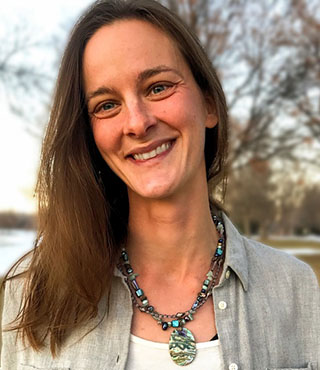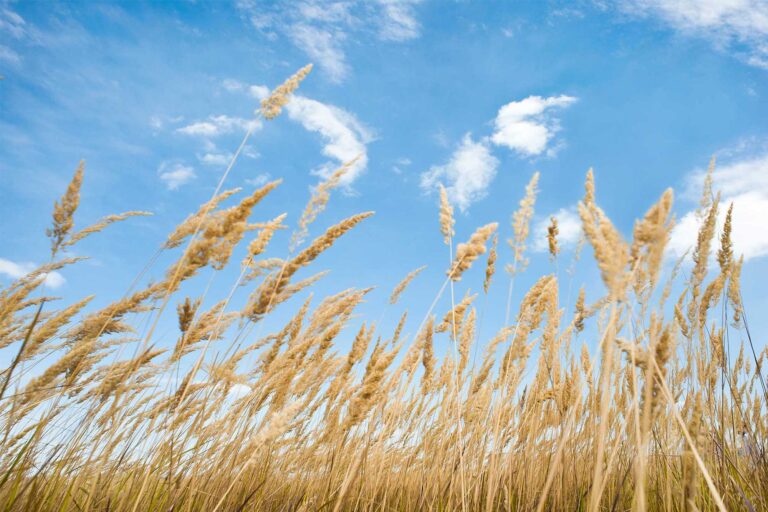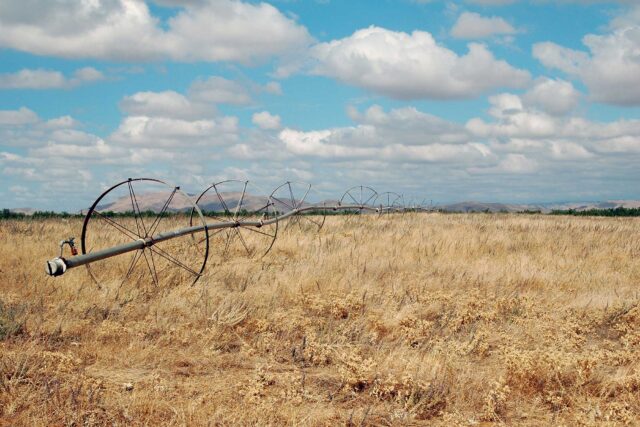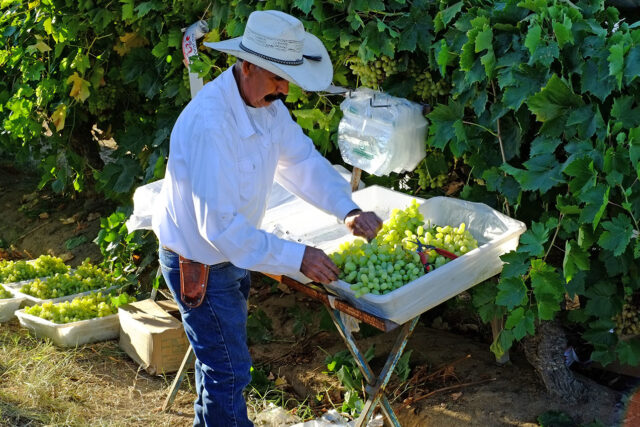Large areas of California farmland, particularly in the San Joaquin Valley, face future restrictions on groundwater pumping to meet the requirements of the Sustainable Groundwater Management Act. We talked to Caity Peterson—an adjunct fellow at the PPIC Water Policy Center and a consulting agroecologist—about a joint research project* on the potential for dryland farming to reduce the amount of land needed to be retired from production to balance water budgets.

PPIC: What is dryland farming, and how might it help the San Joaquin Valley achieve groundwater sustainability?
CAITY PETERSON: Dryland farming can mean different things, but at a fundamental level it means growing crops using primarily soil water and rainfall rather than irrigation. In California, rain comes in winter, so dryland farming here usually means winter crops such as small grains, forage crops, and pastures. Our project will also look at cases that use a small amount of supplemental irrigation to get the crops started.
Many basins in the San Joaquin Valley will have to reduce groundwater pumping, whether due to SGMA requirements or simply the increased frequency of severe droughts. This means that some crops may no longer be viable on some lands in the future. While it’s expected that some retired lands will be used for large-scale renewable energy or natural habitat, there’s concern about a lot of farmland coming out of production at once and of land being fallowed for a long time. That can have serious drawbacks, including soil erosion, air quality impacts from dust, and economic losses. Dryland farming could reduce those problems. On some marginal lands dryland farming could be a permanent solution, while other lands may be irrigated as usual but switch to dryland practices in drought years. It will depend a lot on where you are in valley, because there is wide geographic variability in rainfall and other factors.
PPIC: What are some constraints to this approach in the valley, and are there opportunities that could help make it succeed?
CP: Dryland farming is not an easy proposition, primarily because of the valley’s climate. It’s a semi-arid zone, and it’s very difficult to produce anything—especially in the southern reaches—without irrigation. Some people are attempting forms of dryland farming in these areas, but it’s risky. Some years you may get a good crop, but you can regularly get years where it doesn’t rain for a couple of weeks, which can ruin a newly planted crop. The other major constraint is the economics. The valley has an extremely valuable ag economy, with some crops like almonds pulling in $7,000-$8,000 per acre. But the commodity crops suited to dryland farming are more like $200 an acre. We also have relatively small-sized farms and higher production costs compared to other dryland farming areas, which makes it hard to compete.
As for what might make this work, a couple of things have come up in our conversations with our project advisors and stakeholders on the role that public and private incentives might play. We’re assuming that having some sort of production would be better than having nothing in the ground because it reduces the negative impacts of fallowed land. But given the economics, we’d have to help farmers cover their losses. Incentives could come from federal and state programs, or emerging climate markets that could reward carbon storage in soil. Corporate responsibility initiatives might be willing to pay for sustainability practices on farms that supply their markets. And then there’s the dairy industry, which is so fundamental to California agriculture; dryland farmers could get a premium for dairy forage or silage, especially in dry years when there’s a shortage of good pasture.
PPIC: What knowledge gaps need exploring to determine if this is viable in the valley?
CP: One of the big obstacles is we don’t know the value of some of the benefits of keeping land in production rather than fallowing it, and who benefits—for example, from improved water infiltration or better air quality. We need to explore ways to measure these benefits and verify them. We also need more information on how to grow dryland crops in this part of California—for example, which crops and which varieties would work, and how can we reduce the risks of crop failure from unreliable rainfall. It would also be nice to know more about who is innovating in this area and learn from their experience. And finally, any solutions we come up with will have to be geographically specific to deal with the climatic variables across the valley. That will require a lot of coordination with stakeholders across the valley to create customized solutions for different areas.
* The project, “Incentivizing Climate-Smart Farmland Transitions in the San Joaquin Valley,” is a joint venture between PPIC, UC Davis, UC Merced, Fresno State, and the Central Valley Community Foundation. The work is supported by the California Strategic Growth Council’s Climate Change Research Program with funds from California Climate Investments—Cap-and-Trade Dollars at Work.




